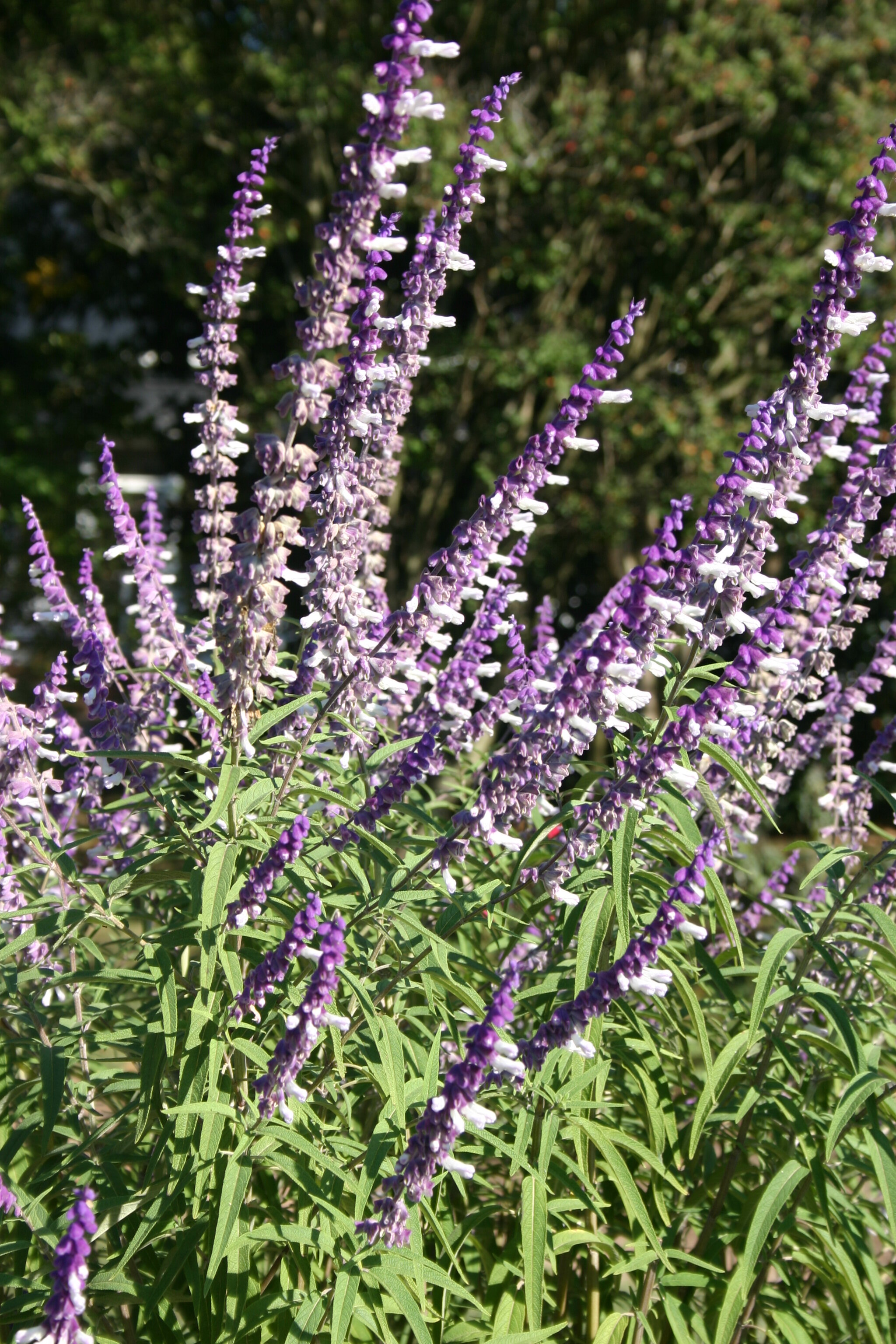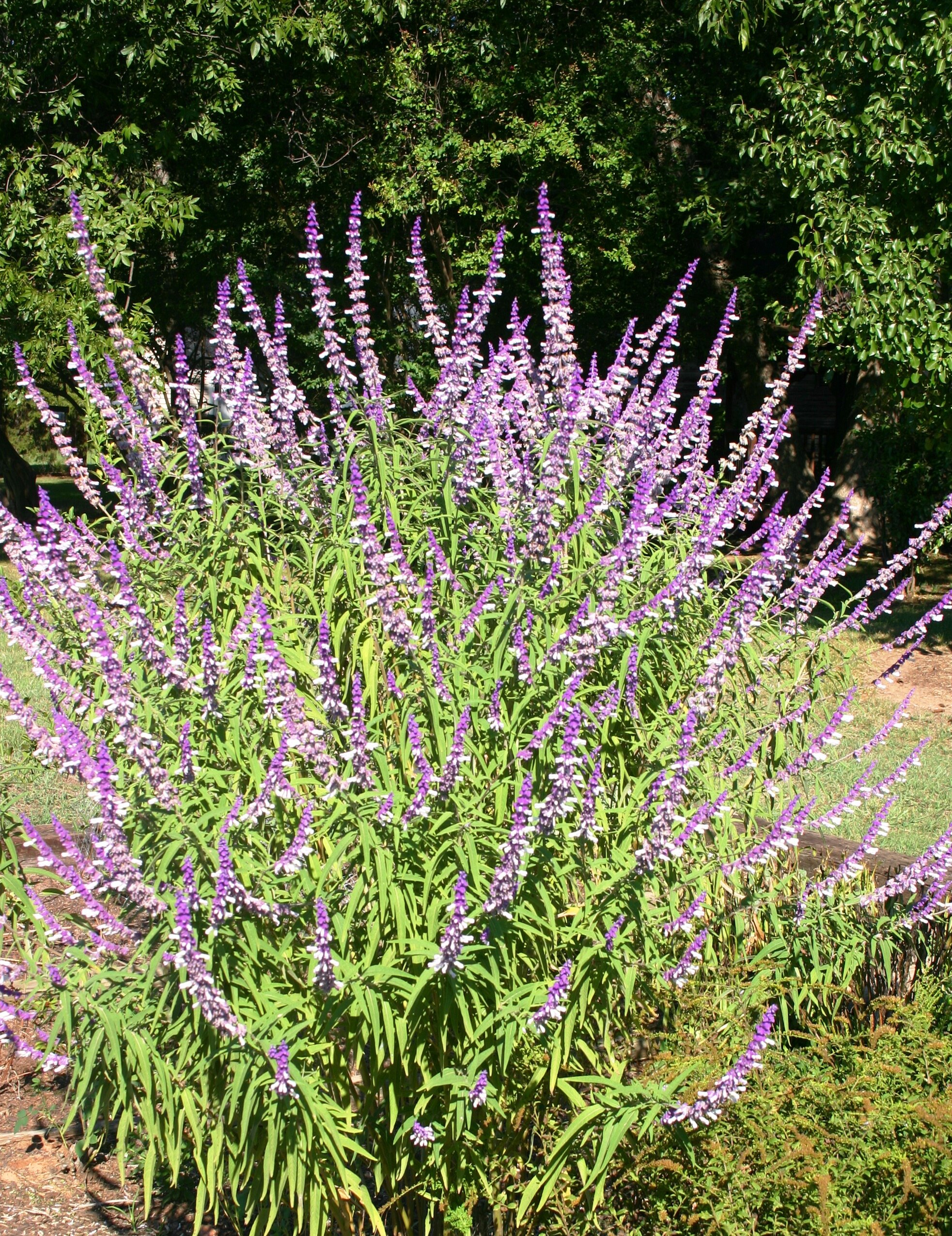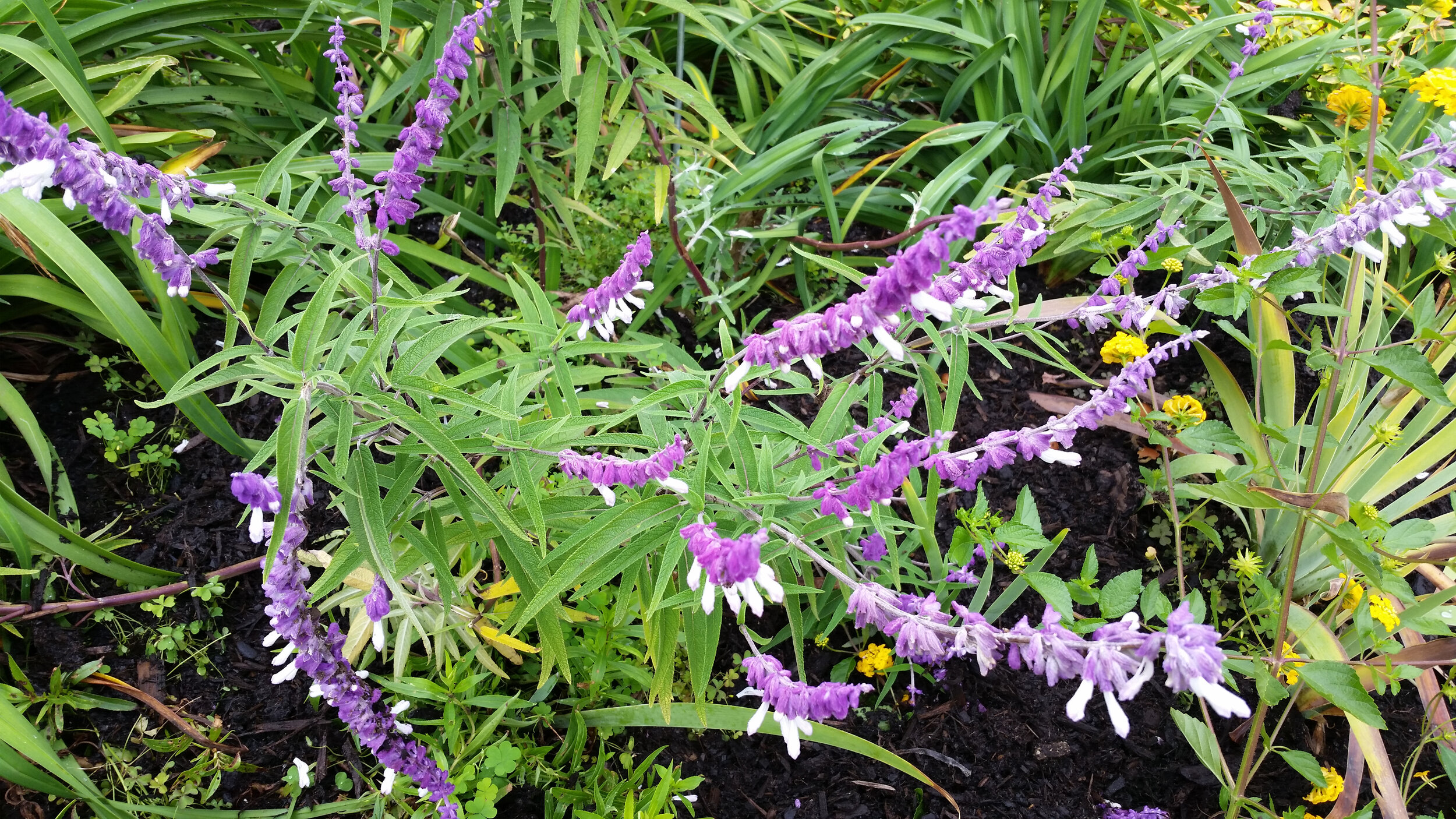Members of the Salvia genus are beautiful and easily grown. Salvia leucantha, Mexican Salvia or Mexican Bush Sage, makes a great back-of-the-border plant, where its purple or purple/white bicolor flowers rise above shorter plants. They are a favorite of pollinators and bloom in the fall when other nectar producers are winding down. Mexican Salvia is tolerant of most soils (prefers neutral pH) and will withstand heat and drought. Early flowers will be all purple; later flowers will have purple calyces and white corollas. A pink form is available but I have not found it in local nurseries. Foliage has a gray tint. Flowering extends for weeks.
Salvia leucantha, pronounced SAL-vee-ah lew-KAN-thuh, is listed as an annual in Zones 6 and colder. An especially harsh winter may kill those in zones 7 or 8. Established plants have overwintered several years in the Mary Snoddy garden.
Plants may tower to six feet. ‘Santa Barbara’ cultivar is a dwarf, reaching only three feet. The taller forms may split or flop, so I recommend pruning them back by one-third around the first of July. Flowering may be delayed by a week or two but pruned plants will be shorter and bushier, which means more flowers and less staking (double win!). Shorter plants do well in containers. In the border, Mexican Salvia pairs well with yellow Lantanas or Black-Eyed Susans. Like other square-stemmed plants, it is easy to root from cuttings. Plant in full sun to mostly sun.
Don’t confuse leucantha with Leucanthemum, Shasta Daisy. Also note that this is not an edible plant, despite the Sage moniker. Deer and rabbits pass this one by, which pollinators flock to it.



